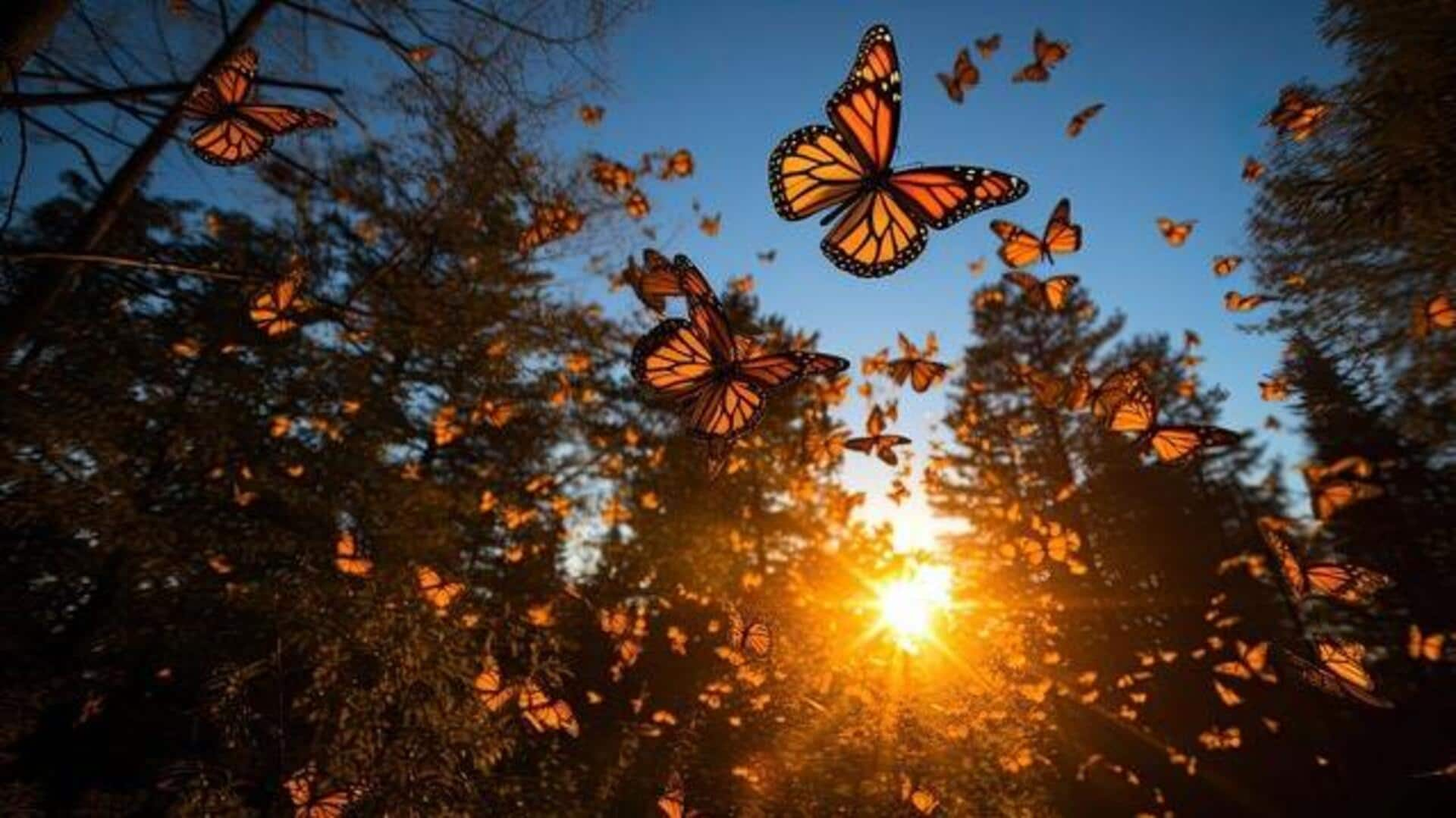
Why butterfly migrations are a must-see spectacle
What's the story
Africa, the continent teeming with biodiversity, holds the key to one of nature's most breathtaking spectacles: the butterfly migration. This phenomenon, millions of butterflies journeying across Africa's landscapes, presents an unparalleled experience for adventure travelers seeking to immerse themselves in the wonders of the natural world. The migration pathways traverse diverse ecosystems, revealing a fascinating panorama of Africa's ecological tapestry.
Timing
Best times to witness the migration
The optimal periods for witnessing butterfly migrations in Africa depend on the species and their particular migration routes. In general, the best times are during the warmer months from September to November and from March to June. These are the times when visitors can expect to see large swarms of butterflies making their epic journey across the continent.
Hotspots
Key locations for observation
The most notable destinations for witnessing butterfly migrations are Uganda's Kibale National Park and Kenya's Arabuko Sokoke Forest. Kibale is renowned for its vibrant butterfly species fluttering amidst the rainforests, while Arabuko Sokoke serves as a refuge for rare and endemic species. These locations provide more than just a glimpse of the migrations; they immerse visitors in Africa's abundant biodiversity.
Eco-tours
Guided tours and conservation efforts
Joining guided tours led by local experts significantly enriches the experience of tracking butterfly migrations. These tours also play a crucial role in conservation as they raise awareness and generate funds for projects aimed at preserving habitats. Travelers can gain insights into the fascinating world of different species, their migration patterns, and the efforts being made to protect them, all while enjoying an immersive experience in nature.
Snapshots
Photography tips for capturing butterfly migrations
Photographing butterfly migrations requires patience and a decent zoom lens for close-up shots of these beautiful insects in flight or resting. Snap your photos early in the morning when they're less active and you can get closer without disturbing them. Remember, keeping a respectful distance and not trampling their habitat is key to ensuring wildlife and visitors can continue to coexist peacefully.